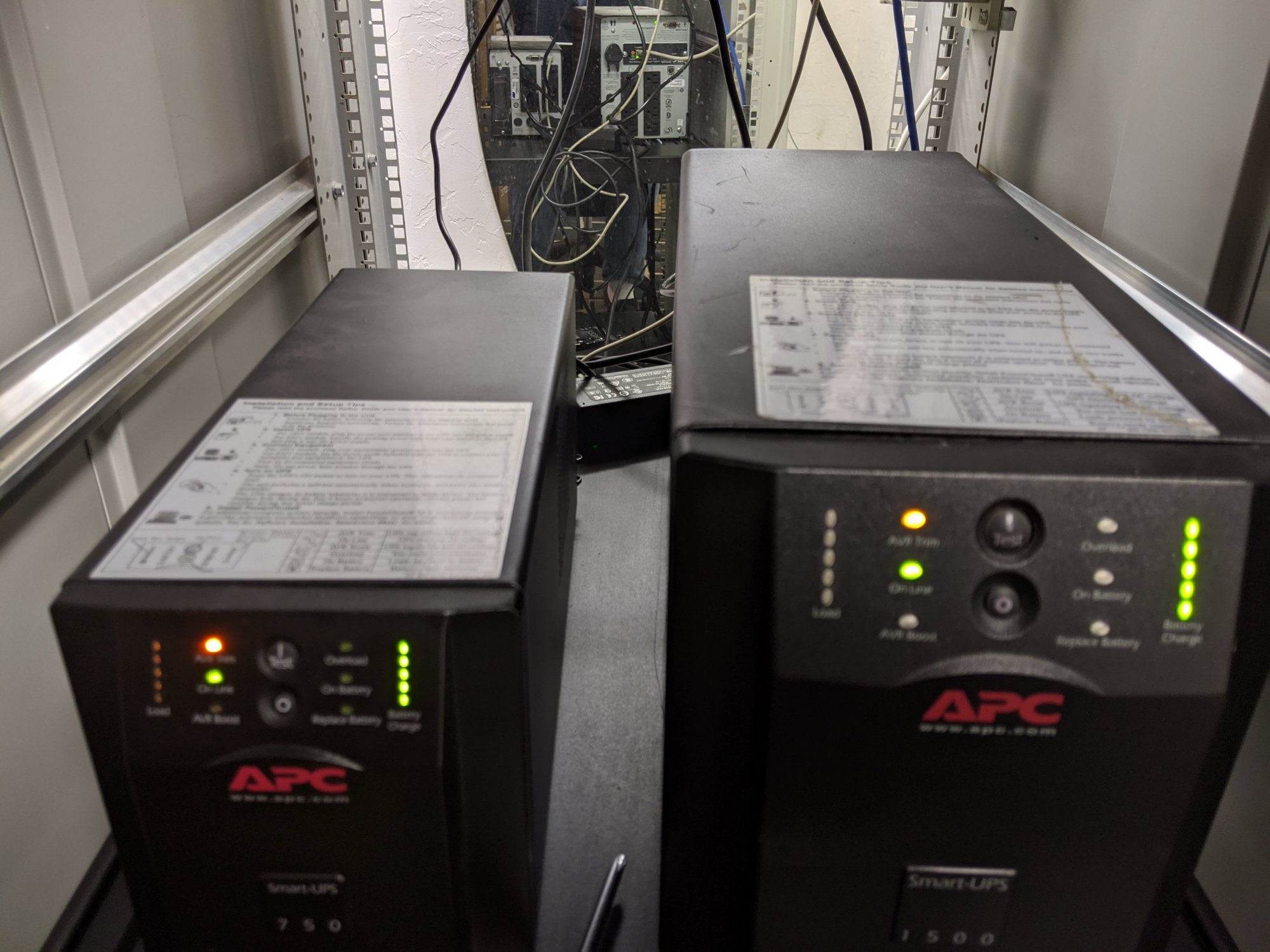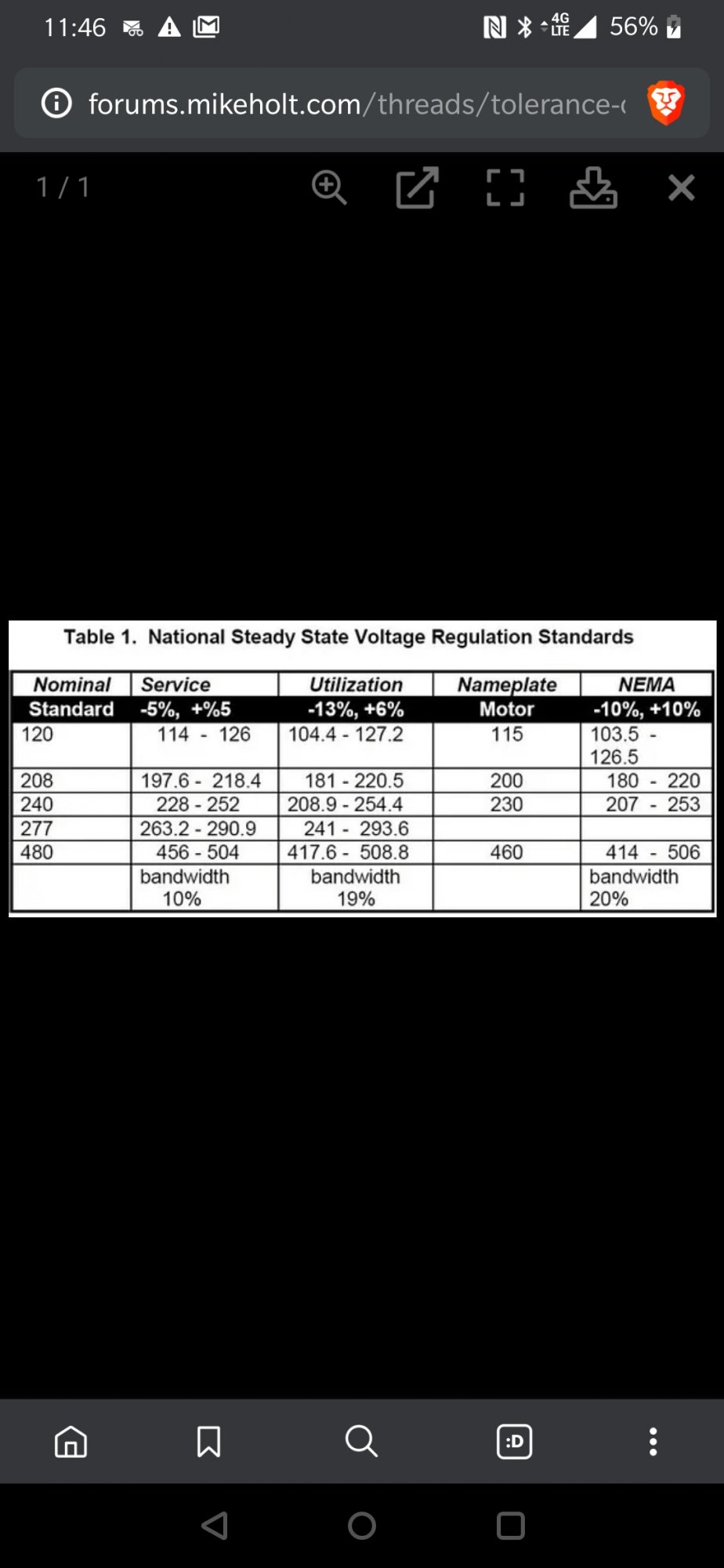Zarathustra[H]
Extremely [H]
- Joined
- Oct 29, 2000
- Messages
- 38,835
Hey all,
I was trying to find the best place to stick this thread, but it doesn't really fit neatly in any subforum, but here goes.
We are in the process of moving in to a new house. I'm setting up my rack in my new server room, and both of my APC Smart-UPS units are spending a lot of time in "AVR Trim" mode, which means they have detected too high line voltage, and are adjusting it down for the equipment.
US line voltage spec is 120V +/- 5%, so a range of 114V to 126V.
I've been monitoring the line voltage using my APC units every now and then. They drift in and out of AVR mode. When the AVR LED's are lit up, I read a line voltage of ~127.5V, which is above spec. The AVR LED's are lit up about half the time. I'm guessing the line voltage is flirting with the upper specification limit.

So, I am neither an electrician nor an electrical engineer (my specialties are in mechanical, industrial and process engineering), but my question is, how much of a problem is this?
Is this a "drop everything, this might start a fire" moment, or should I just count my lucky stars, because higher voltage means lower current which means better efficiency?
I'm not that concerned about the stuff behind the UPS units, but what about everything else in the house?
Appreciate any suggestions, including whether I need to get on the line to the power company ASAP!
I was trying to find the best place to stick this thread, but it doesn't really fit neatly in any subforum, but here goes.
We are in the process of moving in to a new house. I'm setting up my rack in my new server room, and both of my APC Smart-UPS units are spending a lot of time in "AVR Trim" mode, which means they have detected too high line voltage, and are adjusting it down for the equipment.
US line voltage spec is 120V +/- 5%, so a range of 114V to 126V.
I've been monitoring the line voltage using my APC units every now and then. They drift in and out of AVR mode. When the AVR LED's are lit up, I read a line voltage of ~127.5V, which is above spec. The AVR LED's are lit up about half the time. I'm guessing the line voltage is flirting with the upper specification limit.

So, I am neither an electrician nor an electrical engineer (my specialties are in mechanical, industrial and process engineering), but my question is, how much of a problem is this?
Is this a "drop everything, this might start a fire" moment, or should I just count my lucky stars, because higher voltage means lower current which means better efficiency?
I'm not that concerned about the stuff behind the UPS units, but what about everything else in the house?
Appreciate any suggestions, including whether I need to get on the line to the power company ASAP!
Last edited:
![[H]ard|Forum](/styles/hardforum/xenforo/logo_dark.png)


